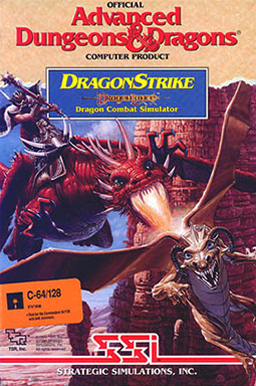
DragonStrike is a 1990 video game based on the Dungeons & Dragons fantasy tabletop role-playing game.

Might and Magic Book One: The Secret of the Inner Sanctum is an early role-playing video game, first in the popular and influential Might and Magic franchise. It was released in 1986 as New World Computing's debut, ported to numerous platforms and re-released continuously through the early 1990s.
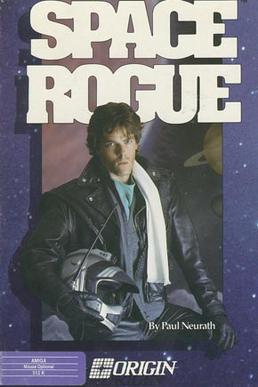
Space Rogue is a space flight simulation video game developed by Origin Systems and published by Origin Systems, Wave Brain, and Night Dive Studios. The game was released in 1989 for Apple II and Commodore 64; the series was later ported to DOS, Macintosh, Amiga, and Atari ST. The game was also released in the Japanese language for PC-9801, X68000, and FM Towns. The FM Towns version had its intro remade with slight animations and new illustrations, along with scrolling Japanese text, and exclusive CD quality background music. Taking place within the Far Arm of the Milky Way galaxy, Space Rogue's main story revolves around the player character's efforts to pursue a career and undertake long-range goals beyond his immediate mission.

Hillsfar is a role-playing video game for MS-DOS compatible operating systems, Amiga, Atari ST, and Commodore 64. It was developed by Westwood Associates and published by Strategic Simulations in 1989. It combines real-time action with randomly generated quests and includes elements of the Advanced Dungeons & Dragons fantasy role-playing game. A port to the Nintendo Entertainment System was released in 1993. Hillsfar received mixed reviews from critics.

A-10 Tank Killer is a 1989 combat flight simulation video game for DOS developed and published by Dynamix. An Amiga version was released in 1990. The game features an A-10 Thunderbolt II attack aircraft. Following the success of Red Baron, version 1.5 was released in 1991 which included Gulf War missions and improved graphics and sounds. Several mission packs were sold separately. A sequel published by Sierra, Silent Thunder: A-10 Tank Killer II, was released in 1996.
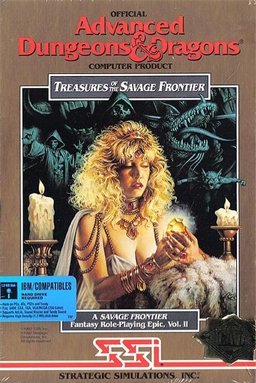
Treasures of the Savage Frontier (1992) is a Gold Box Dungeons & Dragons role-playing video game. It was developed by Beyond Software and published by SSI for the Amiga and DOS.
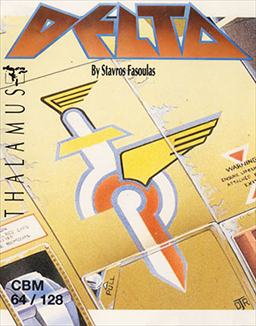
Delta is a horizontally scrolling shooter released for the Commodore 64 by Thalamus Ltd in 1987. It was programmed by Stavros Fasoulas and the music was written by Rob Hubbard. The game was published as Delta Patrol in the United States by Electronic Arts, for its Amazing Software line, in 1987 on the Commodore 64. It was also released for the ZX Spectrum in 1990 as Delta Charge.

Planet's Edge is a 1992 space science fiction role-playing video game developed by New World Computing with Eric Hyman as the lead designer. The game's plot centers on investigating the sudden disappearance of planet Earth, by venturing out into the universe from a Moon base. There are two main play modes: real-time exploration and combat using various spacecraft, and turn-based exploration, problem solving, and combat on the surface of dozens of planets. The game features a variety of objects, weapons, and missions, though it lacks any detailed experience or stats system for the four characters the player controls.

Knights of Legend, released by Origin Systems in 1989, is a fantasy role-playing video game.
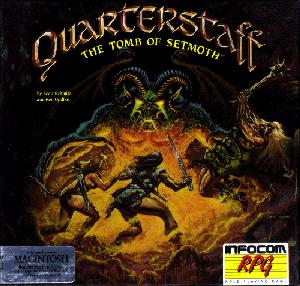
Quarterstaff: The Tomb of Setmoth is an interactive fiction role-playing video game developed by Scott Schmitz and Ken Updike and released by Infocom for Macintosh in 1988. The game features a text parser, graphics, a dynamically updated map, and a graphical interface that incorporates Mac OS hierarchical menus.

Mines of Titan is a single-player role-playing video game, developed by Westwood Associates, and released by Infocom in 1989 for Apple II, Commodore 64 and MS-DOS.
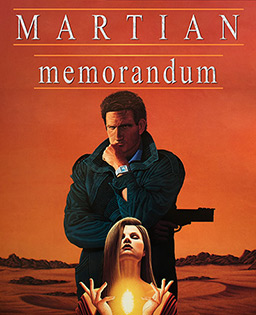
Martian Memorandum is a dystopian cyberpunk/noir graphic adventure game that was originally released in 1991 for MS-DOS. It was developed and published by Access Software. The game is the second in the series of Tex Murphy mysteries; its immediate sequel is Under a Killing Moon. The game is set in 2039, several years after Mean Streets.

The Kristal is an action game/adventure game first released in 1989 for the Amiga computer. It was later released for the Atari ST and MS-DOS. It was developed by the UK-based company Fissionchip Software, and published in Europe by Addictive Games and in the US by Cinemaware. Unusually for a video game, the game is based on a play, The Kristal of Konos, written in 1976; the authors of the play worked together with the game developers and the play was never shown in theatres or on film before the game's release. A dialog introducing the setting recorded by Patrick Moore, who introduced both the game and play.

Oids is a multidirectional shooter developed and self-published by FTL Games in 1987. The game was originally released on the Atari ST, followed by a B&W version for the classic 68k Macintosh in 1990. The Atari ST version, written by Dan Hewitt, was a cult favourite in the UK, where it received rave reviews.

Swamp Gas Visits the United States of America is a computer game developed by Inline Design in 1990 for the Macintosh and Windows 3.1x. A sequel - Swamp Gas Visits Europe - was released in 1992.
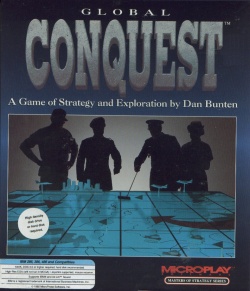
Global Conquest is a video game published by Microplay Software in 1992 for IBM PC compatibles. It is a version of Empire with numerous gameplay upgrades and a multi-player mode supported via modems.

Prophecy of the Shadow is a 1992 fantasy role-playing video game developed by Strategic Simulations for MS-DOS. The game was released in both English and German versions.

Warrior of Rome II, also known as Caesar no Yabou II is a real-time strategy video game developed and published by Micronet in 1992 for the Sega Mega Drive/Genesis as a sequel to Warrior of Rome.
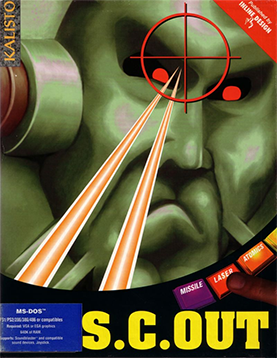
S.C.OUT is a computer game developed and published by Atreid Concept in 1992 for Macintosh and MS-DOS.

The Legend of Kyrandia: Book One is a 2D point-and-click adventure game, and the first game in the Fables & Fiends series. It was developed by Westwood Studios and published by Virgin Games in August 1992.



















